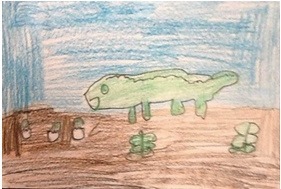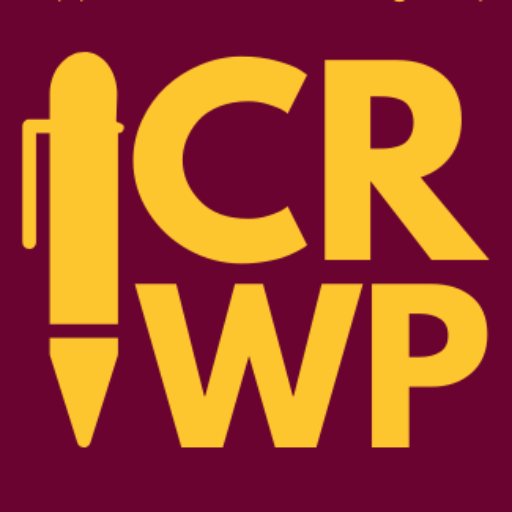 In my last two blog posts (21st Century Literacy and Alligator in the Classroom), I began to tell the story of a shared inquiry project on the American Alligator that my first grade students and I engaged in last winter. The project began when a parent of one of my students brought a preserved alligator head into the classroom igniting my students’ curiosity about the animal. In order to answer their many questions, we spent about two weeks viewing videos, reading books, sharing and recording ideas, and comparing information from different sources. I was able to address almost all of the CCSS for informational reading in my lessons, as well as provide opportunities for students to develop some of the habits of mind outlined in the Framework for Success in Postsecondary Writing: curiosity, engagement, persistence, and responsibility.
In my last two blog posts (21st Century Literacy and Alligator in the Classroom), I began to tell the story of a shared inquiry project on the American Alligator that my first grade students and I engaged in last winter. The project began when a parent of one of my students brought a preserved alligator head into the classroom igniting my students’ curiosity about the animal. In order to answer their many questions, we spent about two weeks viewing videos, reading books, sharing and recording ideas, and comparing information from different sources. I was able to address almost all of the CCSS for informational reading in my lessons, as well as provide opportunities for students to develop some of the habits of mind outlined in the Framework for Success in Postsecondary Writing: curiosity, engagement, persistence, and responsibility.
After two weeks of study, when the students had answered all of their questions on alligators, I posed a different kind of question: “Now what are you going to do with all of your information about alligators?” At first the students didn’t know how to respond; They had been learning to satisfy their own curiosity. However, with a few guiding questions from me, they entered into a discussion about with whom they should share the information, how they would share it and why they should share it. In the end, they decided to make a movie that they would use to try to teach the other students in the school to care about alligators as much as they did. I emailed the other teachers in the building asking if any of them could spare 15 minutes to let us come and show our movie and talk to their classes. Almost every teacher responded yes! The students were so excited. The reality of the audience and the belief that they were doing an important service in the world to help protect the alligator gave their work energy and purpose.
In order to make their movie, the students reread the notes they had taken throughout the study and chose the most important ideas to be included. The students used critical thinking skills as they debated which ideas were most important. Through this process, they began to understand how authors have to consider audience and purpose when creating text, building their rhetorical knowledge of writing. Critical thinking skills and rhetorical knowledge are identified in the Framework for Success in Postsecondary Writing.
 Next the first grade students decided they would use the app Draw and Tell on their iPads to create the movie; each child illustrated one idea and recorded his/her voice to explain the illustration. Some children chose to create their pictures using digital drawing tools in the app and others chose to import photos of their hand-drawn illustrations. Again, they were learning how to make decisions based on the best way to convey the information. We created the final movie by compiling their individual illustrations into iMovie. The students made every decision necessary for creating the movie including the order in which to place the photos, the music in the background, the sound effects and title font. Through this process, I was able to teach many of the Common Core State Standards for informational writing, production and distribution of writing, and research to build and present knowledge.
Next the first grade students decided they would use the app Draw and Tell on their iPads to create the movie; each child illustrated one idea and recorded his/her voice to explain the illustration. Some children chose to create their pictures using digital drawing tools in the app and others chose to import photos of their hand-drawn illustrations. Again, they were learning how to make decisions based on the best way to convey the information. We created the final movie by compiling their individual illustrations into iMovie. The students made every decision necessary for creating the movie including the order in which to place the photos, the music in the background, the sound effects and title font. Through this process, I was able to teach many of the Common Core State Standards for informational writing, production and distribution of writing, and research to build and present knowledge.
As I watched my students at work creating their alligator movie, the following quote from Katie Wood Ray’s book About the Authors kept going through my head: “The writing is sort of small in comparison, but the work is very big” (10). The product was not what was important here. Rather, it was the amazing amount of learning going on in the process of creating the movie. The students were truly engaged in the writing process: researching, collaborating, drafting, giving each other feedback, revising, and finally publishing in an electronic format. The ability to use the writing process to create text is listed as an important skill in the Framework for Postsecondary Success and is described in the CCSS Anchor Standards for College and Career Readiness. In addition, students were developing the habits of mind of curiosity, engagement, creativity, persistence, and responsibility.
After a week of hard work, the movie was complete, and we were ready to share it with the other classes. As we made our way to the fourth grade classroom, I knew the students were nervous and excited, but they walked down the hall like a group of professionals headed into a business meeting. They were proud of themselves and their work. When we entered the room, my students quietly took their seats in neat rows on the floor to the left of the big screen. As we had rehearsed, two students introduced the video and then pushed play.
Everyone in the room paid undivided attention to the 5-minute video playing on the screen. When it ended, the room erupted in enthusiastic applause. The sound quality was not perfect and some of the images were a little hard to decipher, but the fact that this group of six and seven year olds had done something so authentic had truly impressed their peers. When the applause died down, Skyler, as planned, stood and asked, “Are there any questions?” For the next 10 minutes, the fourth grade students and the adults in the room asked questions about the content of the video, the process through which the students learned the information and how the video was made. I was amazed at the knowledge the first graders displayed. They explained the research and writing process. They detailed how they had produced the movie using vocabulary that showed their emerging technical knowledge. They shared the reason why they chose to make a video and the impact they hoped to have on the other students in the school.
What started out as an unexpected classroom interruption turned into a shared inquiry project that provided opportunities for students to begin to develop 21st century literacy skills as outlined in The Framework for Success in Postsecondary Writing and the CCSS. As I reflect on this month-long experience I’m excited by the power of inquiry to teach 21st century literacy skills. I wonder where my students will take me this coming year; I can’t wait to follow their lead!

Tricia Clancy is a first grade teacher at Eastlawn Elementary in Midland, Michigan. She was a part of the CRWP Summer Institute in 2013 and now serves as a teacher consultant.

This work is licensed under a Creative Commons Attribution-NonCommercial-ShareAlike 4.0 International License.

Leave a Reply
You must be logged in to post a comment.